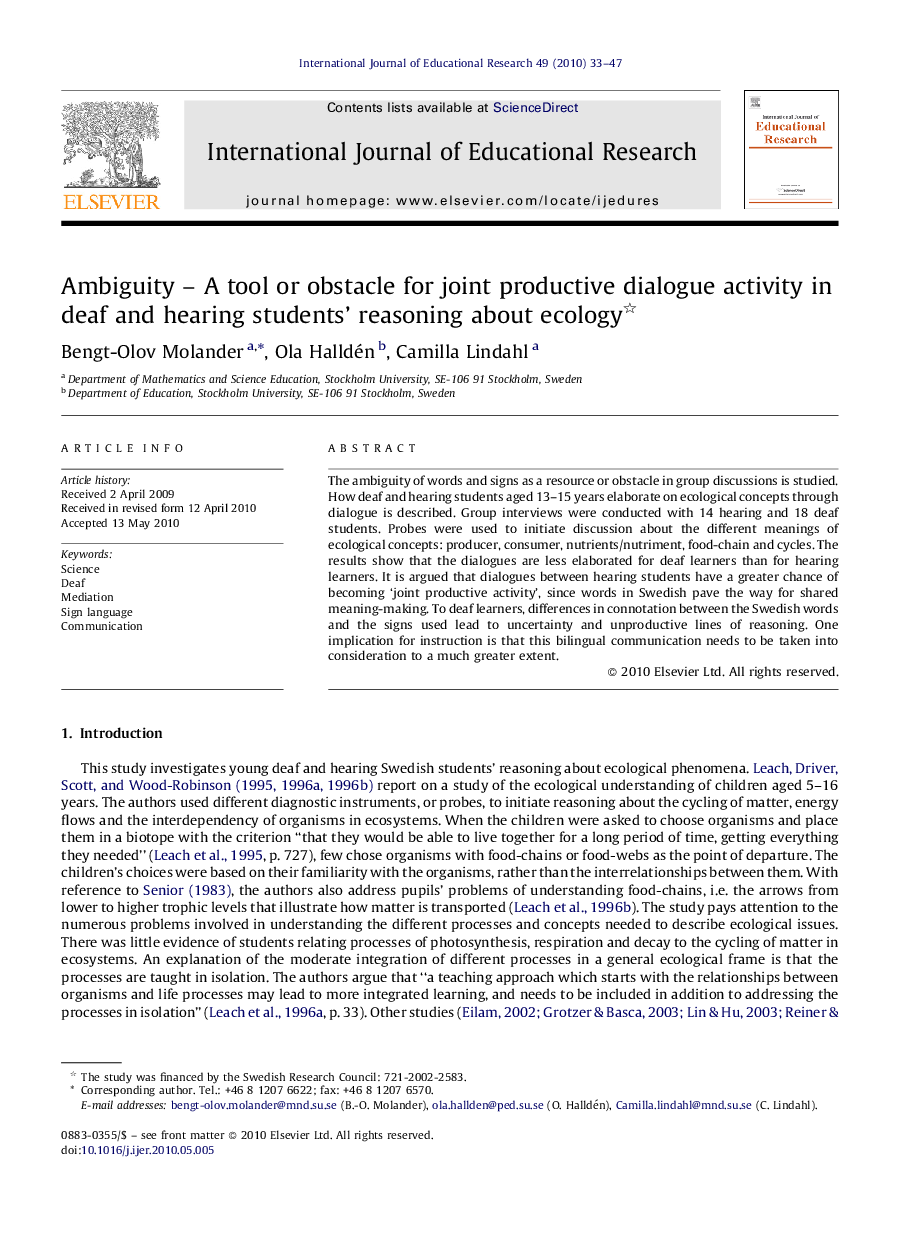| Article ID | Journal | Published Year | Pages | File Type |
|---|---|---|---|---|
| 357194 | International Journal of Educational Research | 2010 | 15 Pages |
The ambiguity of words and signs as a resource or obstacle in group discussions is studied. How deaf and hearing students aged 13–15 years elaborate on ecological concepts through dialogue is described. Group interviews were conducted with 14 hearing and 18 deaf students. Probes were used to initiate discussion about the different meanings of ecological concepts: producer, consumer, nutrients/nutriment, food-chain and cycles. The results show that the dialogues are less elaborated for deaf learners than for hearing learners. It is argued that dialogues between hearing students have a greater chance of becoming ‘joint productive activity’, since words in Swedish pave the way for shared meaning-making. To deaf learners, differences in connotation between the Swedish words and the signs used lead to uncertainty and unproductive lines of reasoning. One implication for instruction is that this bilingual communication needs to be taken into consideration to a much greater extent.
